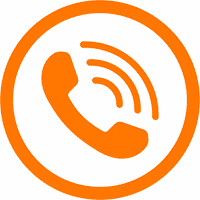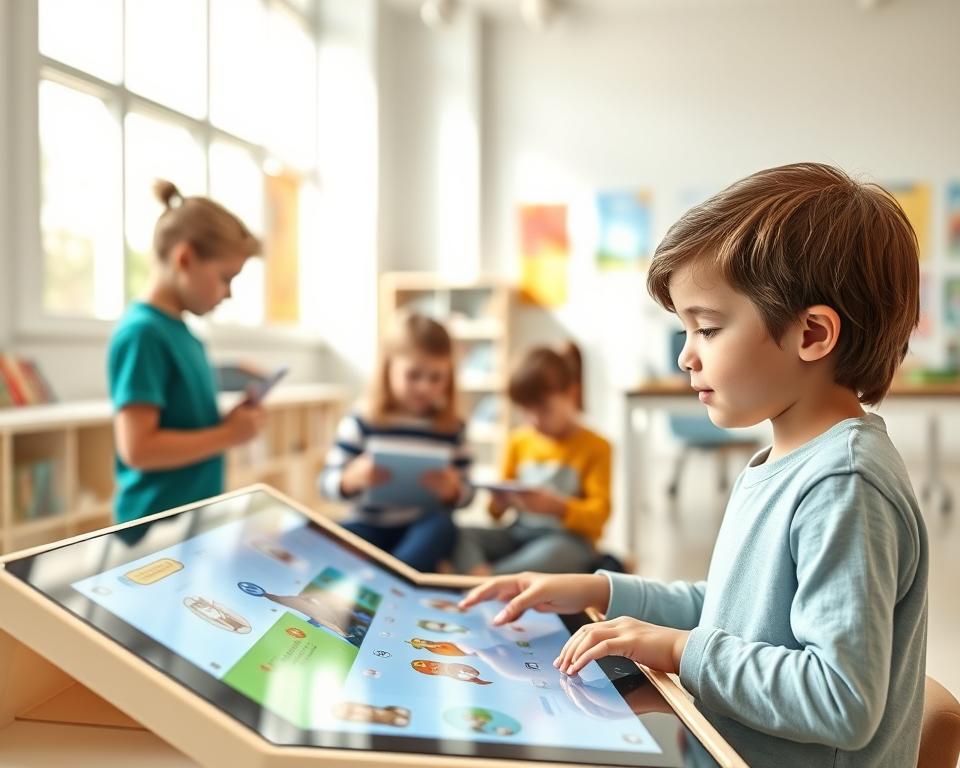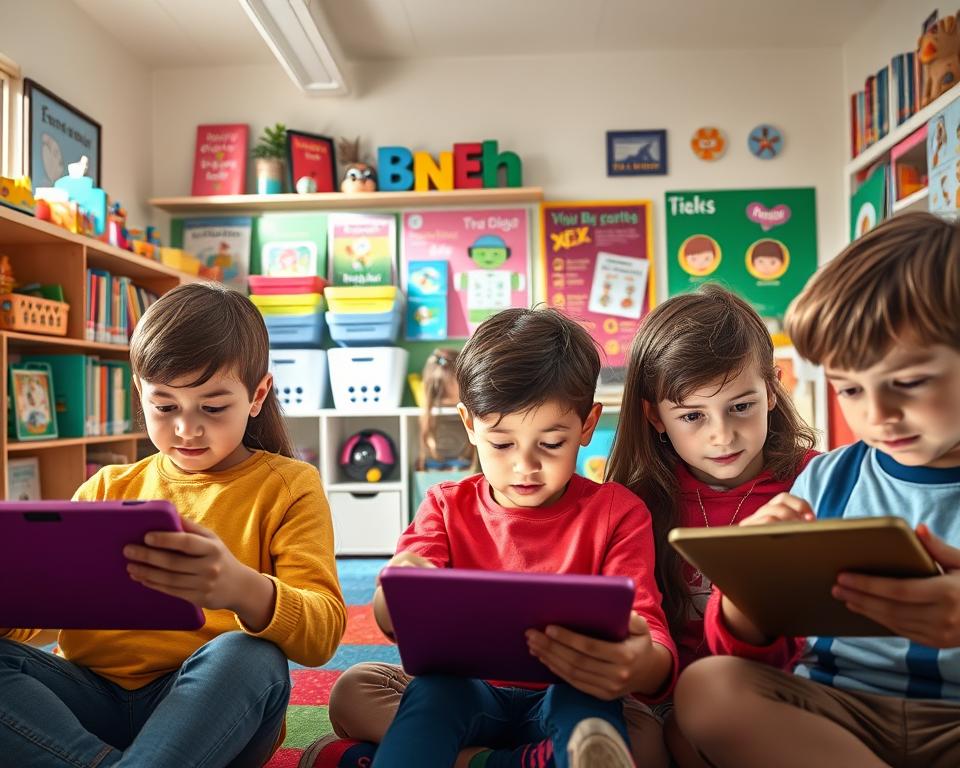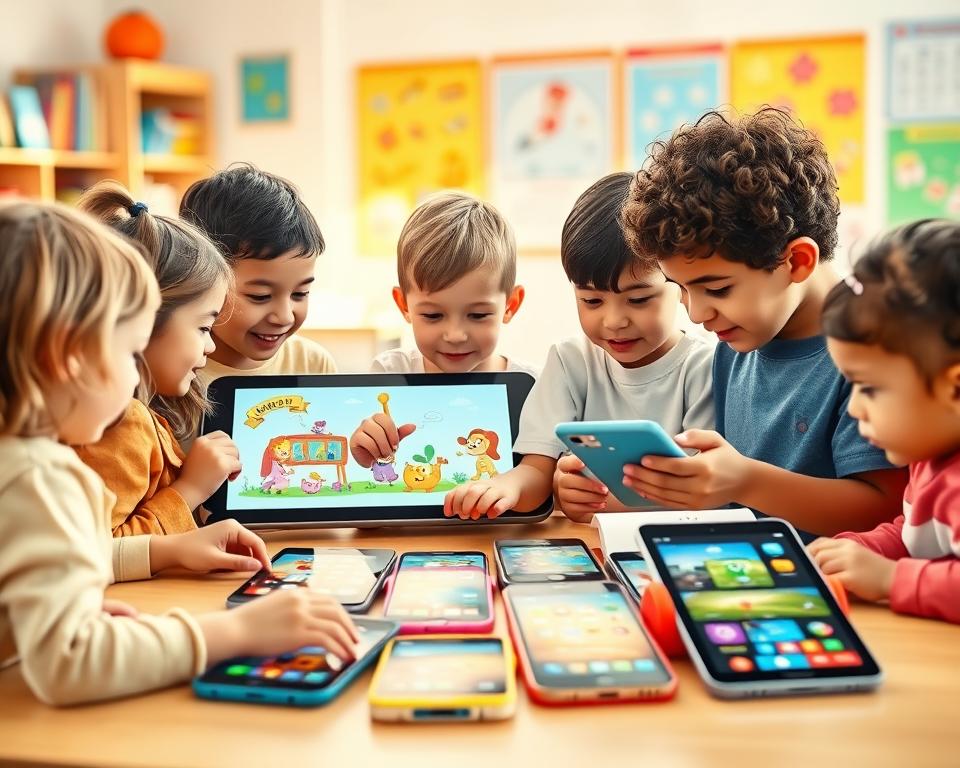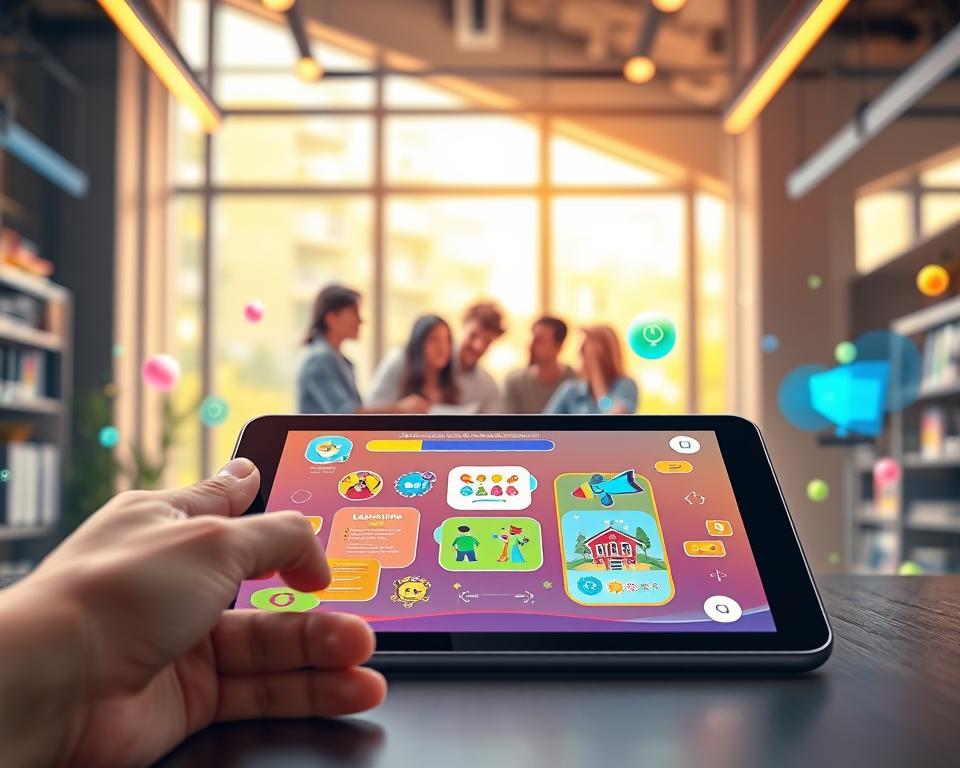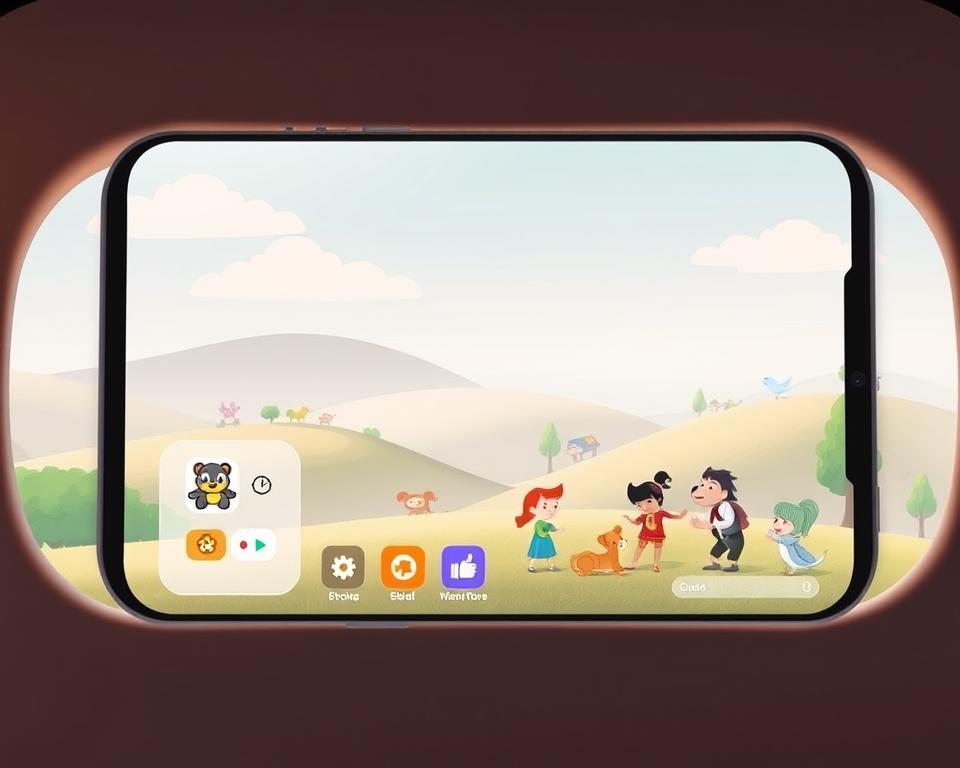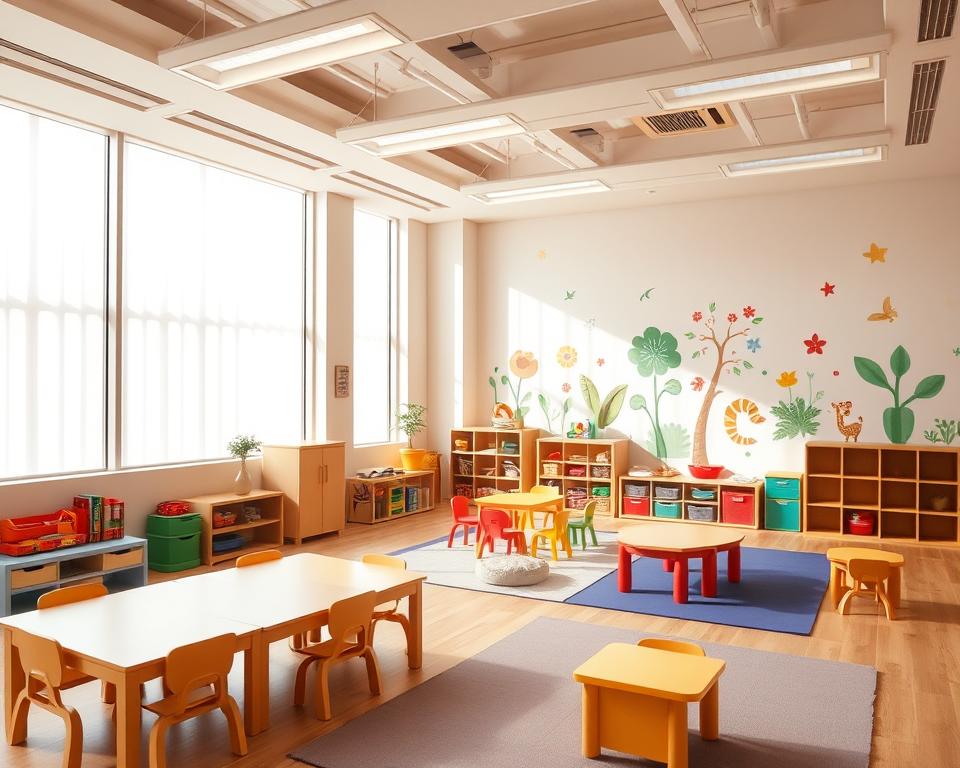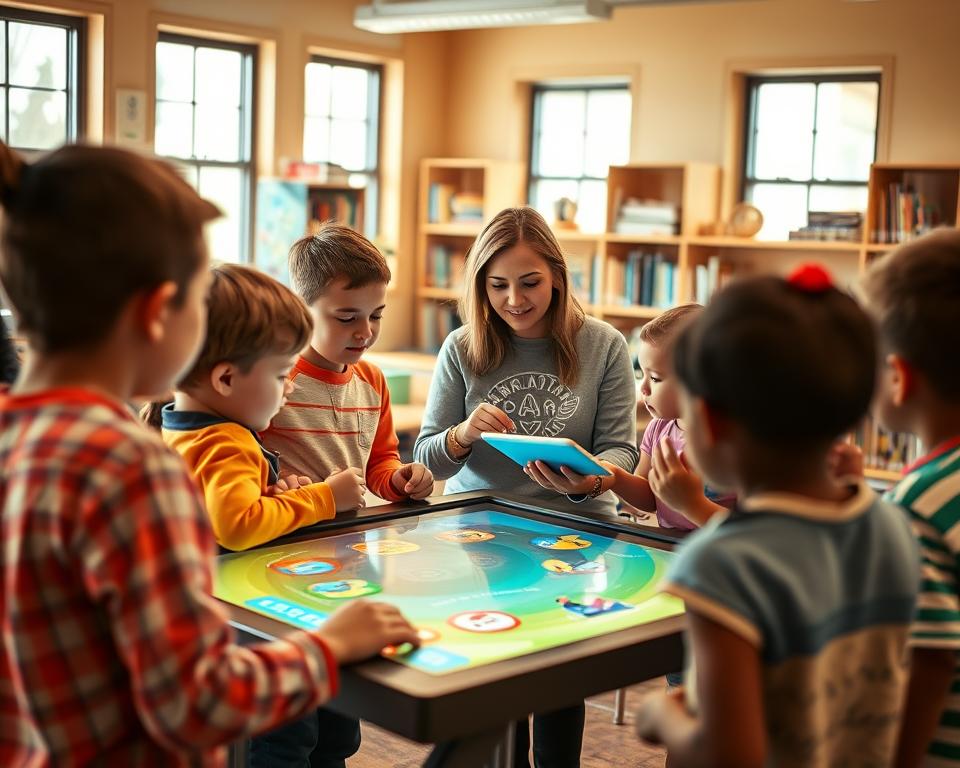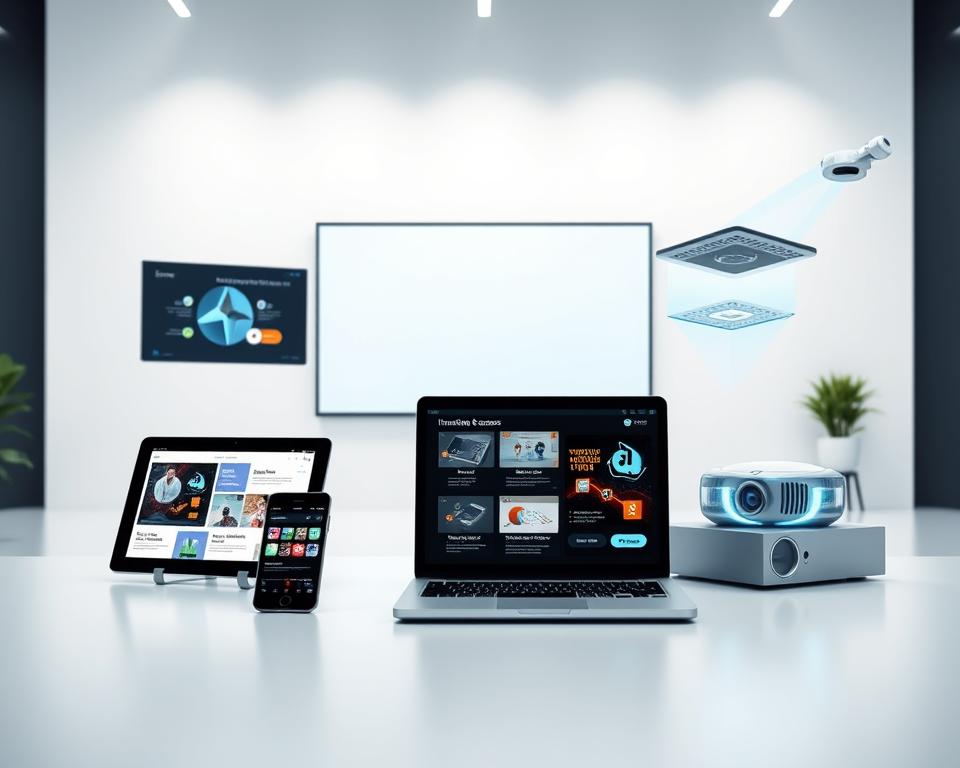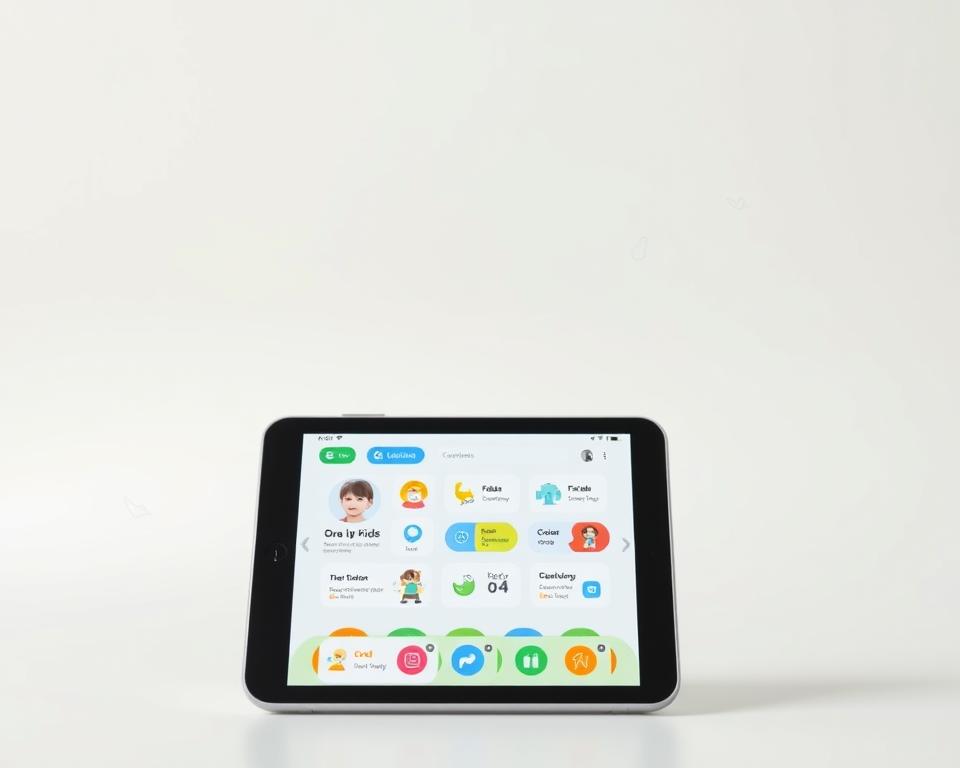Creating educational apps for kids needs careful thought about design and safety. These apps should be fun and teach kids something new. They must also keep children safe online. For more tips on making educational apps for kids, check out educational app development tips.
Good educational apps make learning fun and safe for young minds. They help kids grow in many ways. By using the right design and safety steps, apps can be both enjoyable and educational. This way, they keep kids safe from online dangers.
Table of Contents
Key Takeaways
- Design principles are crucial for creating engaging educational apps
- Child safety online is a top priority in educational app development
- Developers must consider the impact of digital learning on child development
- Educational apps should be both fun and educational
- Protecting children from online risks is essential
- Educational app development requires careful planning and execution
Understanding the Educational App Landscape
The educational app market is changing fast, with new trends and tech coming up every year. Learning app design is now key in making educational software for kids. It’s important to know the current trends and how digital learning affects kids.
Some important things to think about in the educational app world include:
- Personalized learning experiences
- Interactive and engaging content
- Accessibility and usability
- Integration with existing educational systems
Digital learning has a big impact on child development, especially on cognitive and social skills. Effective learning app design helps kids improve these skills. This makes it a vital part of educational software for kids.
Parents, educators, and developers need to work together to make apps that meet their audience’s needs. By understanding the educational app world and using learning app design principles, developers can make top-notch educational software for kids. This software supports their development and learning.
Essential Components of Child-Focused Educational Apps
When making educational apps for kids, it’s key to add important parts that help them learn and stay interested. Mobile learning solutions are getting more popular, offering many benefits for young students. By using digital education tools, creators can make apps that are fun and fit different learning ways.
A good educational app should have interactive parts, educational content, and be easy to use. Some important features to think about are:
- Interactive quizzes and games
- Engaging videos and animations
- Personalized learning paths
- Real-time feedback and assessment
By adding these features, developers can make mobile learning solutions that are both enjoyable and helpful. Digital education tools can also give insights into how well a child is learning. This helps parents and teachers see what the child is good at and what they need to work on.
The main aim of educational apps for kids is to give them a supportive and fun place to learn. By focusing on the key parts of app design, developers can make digital education tools that help young learners grow and succeed.
User Interface Design Principles for Young Learners
Designing for young learners means thinking about their brain and body development. A user interface that’s friendly to kids is key for a fun and learning-rich experience. Educational technology helps make apps both entertaining and educational.
Visual elements play a big role in learning for kids. The right visuals help them grasp tough ideas and enjoy learning. For more on UI/UX design for mobile apps, check out user experience design principles.
Here are some important things to think about for a kid-friendly interface:
- Simple and easy-to-use navigation
- Colorful and fun visuals
- Controls and buttons that are easy to press
By focusing on these, developers can make educational apps that are both fun and effective. Using educational technology, we can make learning more engaging and interactive. This supports kids’ brain and body growth.
Creating Engaging Learning Experiences
Creating safe learning environments in educational apps is key for effective learning. This is done through educational app development that makes learning fun. Developers use gamification, storytelling, and interactive exercises to make learning enjoyable for kids.
Some important strategies for making learning fun include:
- Providing feedback and assessment to track progress
- Using colorful and attractive visuals to capture children’s attention
- Creating interactive exercises that promote problem-solving and critical thinking
By focusing on safe learning environments and using these strategies, developers can make educational apps that both teach and entertain. This makes learning a positive and enjoyable experience for children.
Building Educational Apps for Children: Design Principles and Safety Considerations
When making a learning app, it’s key to mix core educational ideas into the design. This makes sure the content meets learning goals and keeps child safety online first. A good learning app design should cover many subjects and skills. It should also be fun and helpful for kids.
A top-notch learning app design should have features like learning paths and tracking progress. This lets kids learn at their own speed and see how they’re doing. It’s also smart to add rewards to keep kids motivated. But, these rewards must be safe and not pose any risks.
Some important things to think about when making educational apps for kids are:
- Adding core educational ideas into the app’s design
- Using learning paths and tracking progress
- Creating rewards that focus on child safety online
By focusing on these points and making a detailed learning app design, developers can make safe and fun learning spaces for kids. This helps kids grow and stay safe online.
Safety Features and Child Protection Measures
Ensuring a safe learning environment is key for kids’ educational software. This means adding safety features and child protection to keep kids safe from online dangers. Data privacy guidelines are vital in keeping children’s personal info safe.
A safe place for learning is crucial for kids to do well in school. By adding safety features to educational apps, developers help parents feel secure. They know their kids are safe while using these apps.
- Implementing robust data privacy guidelines to protect children’s personal information
- Developing parental controls to monitor and limit app usage
- Integrating content filtering systems to block inappropriate content
By focusing on safety and protection, developers make educational apps safe for kids. This creates a secure space for them to learn and grow.
Interactive Elements and Gamification Strategies
Adding interactive parts and game-like features to educational apps can make learning fun for kids. By using educational technology, developers can make learning both enjoyable and educational. Mobile apps are great because they let kids learn anywhere, anytime.
When making these interactive parts, it’s important to think about user experience, learning objectives, and age-appropriate design. A well-designed app can be both fun and useful. For instance, using rewards and challenges can motivate kids to learn. Adding features for sharing and teamwork can also help build a sense of community.
When using game-like strategies, there are a few key things to remember. These include:
- Points and badges
- Leaderboards and competitions
- Virtual rewards and incentives
These elements help make learning fun and interactive. By using educational technology and mobile learning solutions, developers can make apps that are both fun and educational.
The main goal is to make learning both enjoyable and effective. By using the latest in educational technology and mobile learning solutions, developers can create apps that truly help kids.
Performance Optimization for Various Devices
When making digital education tools, it’s key to make sure they work well on different devices. This is especially true for educational apps, as it affects how users learn. Developers need to think about a few things, like making apps work on many platforms, managing resources, and making them load fast.
Developers can make top-notch apps by focusing on user experience. They can do this by following best practices. This includes using resources wisely, making apps load quickly, and making sure they work on many platforms.
- Cross-platform compatibility: ensuring that the app works smoothly on different devices and operating systems
- Resource management: optimizing the use of system resources, such as memory and processing power
- Loading time optimization: minimizing the time it takes for the app to load and become responsive
By focusing on making apps perform well, developers can make tools that are both useful and fun. This makes learning better for everyone.
Testing and Quality Assurance Protocols
Testing is key in learning app design. It makes sure the app works well and is safe for kids. A user-friendly interface is vital. Testing with real users helps find ways to make it better.
For example, keeping user privacy safe is very important. Developers must follow rules to make sure the app is secure.
Some important parts of testing and quality checks are:
- Usability testing with children to ensure the app is easy to navigate and understand
- Functional testing to identify and fix bugs and technical issues
- Performance testing to optimize the app’s speed and responsiveness
- Security testing to protect user data and prevent unauthorized access
Quality assurance is a never-ending task. It keeps the app up to standard. By focusing on testing and quality, developers make a safe and effective learning app.
Compliance with Educational Standards
Creating an educational app that meets educational technology standards is key to its success. It’s important to know the education rules and learning goals the app should support. This means making sure the app’s content fits the curriculum and helps kids learn in a safe way.
To start, you need to research the education rules and standards in your target area. Talk to education experts, look at curriculum guides, and check out other educational apps. This helps developers make an app that goes beyond what schools and parents expect, offering a top-notch learning experience for kids.
Some important things to think about for compliance include:
- Matching the app’s content with learning goals and curriculum standards
- Making sure the app’s design and features help all kinds of learners
- Adding features that keep learning safe, like data privacy and parental controls
By focusing on meeting educational standards, developers can make an app that is both effective and reliable. This helps improve the learning experience for kids and supports their growth in safe, supportive learning environments.
Monetization Strategies for Educational Apps
Creating a hit educational app needs smart money-making plans that match the app’s learning goals. In the world of educational app development, it’s key to pick honest ways to make money that don’t mess with learning. Offering premium features is a good way to add value without changing the main learning stuff.
Some top ways to make money with kids’ educational software include:
- Subscription-based models that give access to special content
- In-app purchases for extra features or levels
- Ads that are relevant and don’t get in the way
When planning how to make money, think about who you’re making it for. Make sure it’s clear and fair. This way, developers can make educational apps that work well and make money.
The secret to making money is finding a balance between earning and learning. By doing this, developers can make educational software for kids that helps them learn and also helps the app grow.
Updates and Maintenance Best Practices
Keeping an educational app up to date is key for its success. This means updating content, fixing bugs, and making sure it works with new tech and learning standards. Using mobile learning solutions helps make learning smooth for students.
Developers should focus on these important steps:
- Regularly update content to reflect changing educational standards
- Implement a robust bug-fixing system to minimize downtime
- Ensure cross-platform compatibility to reach a wider audience
By sticking to these practices, developers can make a top-notch educational app. It will offer a great learning experience for students, using the newest digital education tools and mobile learning solutions.
Conclusion: Creating Impactful Educational Apps
As we wrap up our look at educational technology for kids, it’s clear that making impactful educational apps is complex. It needs a mix of good design and educational technology knowledge. Also, making sure the app is easy for kids to use is key. This way, developers can make learning fun and effective.
It’s important to keep improving and updating these apps. Developers should listen to what users say and keep up with new research. This way, they can make sure their apps stay useful and exciting for kids. By always trying to get better and understanding how kids learn, we can make digital learning even more powerful.




